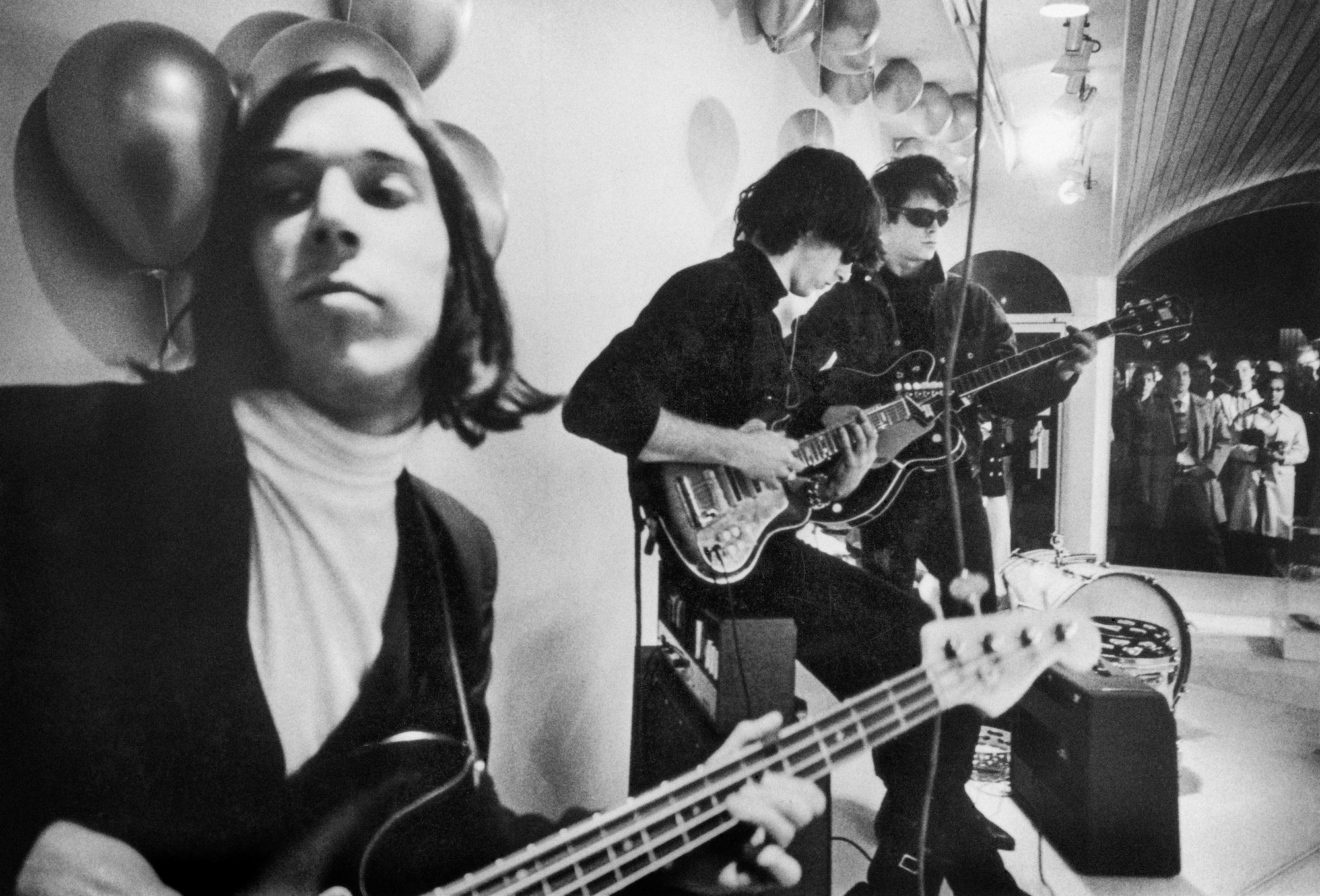Just when you start to believe there are overtold stories with nothing left to reveal, a director such as Todd Haynes comes along and explodes (in Warholian terms) the plastic inevitable. In telling the retread tale of how a New York poet/guitarist such as Lou Reed met a Welsh avant-classicist such as John Cale and so on, Haynes’ The Velvet Underground focuses on lesser publicized elements of how the drone-and-drug-filled sounds of The VU commenced.
Along with welcoming Maureen Tucker’s economic drumming and Sterling Morrison’s Gamelan guitar lines, and connecting with Andy Warhol and Factory minions such as Edie Sedgwick and Fellini-actress-turned-one-note-chanteuse Nico, Haynes leans into more personal stories of a young Reed—the pre-Stonewall queer poet/lyricist and his early coffeehouse days—and the student Cale. Because Cale is the only co-founder left alive (and radically active: his new album Mercy comes out in January), his is the lion’s share of real-time opinion. How things heated up—with almost no money—for the sake of their eponymous-titled debut, then broke down with Reed’s cattiness and provocation pushing Cale out of a band he helped create after VU’s outré and scarier second album White Light/White Heat.
Finding, however, that there was almost no live concert footage (unlike, say, Reed/Cale associates such as Bowie or Dylan, whose every move was captured on camera), Haynes—with a keen eye and historical curation for the Pop Art and the experimental film of the late-1950s and early-’60s—welcomed the mother of invention as his collaborator. Along with interviewing and dedicating his documentary to legendary NYC underground cineaste Jonas Mekas, The Velvet Underground features great elements of Warhol’s experimental films such as Empire, Sleep, and his Screen Test series, along with clips of color-saturated, avant-garde classics such as Scorpio Rising and Flaming Creatures so as to pen a visual homage to the 1960s film world. Closer to an art gallery exhibition than a typical rock-doc, Haynes’ VU film is a love letter to a scene, and not just a sound.
What the new Criterion Collection Blu-ray release adds—what you wanted the home media release to do from the start—beyond offering interview outtakes with Cale, Tucker, Mekas, and Factory actor and dancer Mary Woronov, is entire full versions of some of the avant-garde films excerpted in the movie. There’s a real and formal cinematic magic to be found with this inclusion—dare I say, it’s now a work of art—something more awesome than just the vividly alive bites of A/V that Haynes teasingly flashes at you during his run at The Velvet Underground. Without exaggeration, Criterion just made the very best music documentary of our time better still, something worthy of both blinding white light and white heat.









